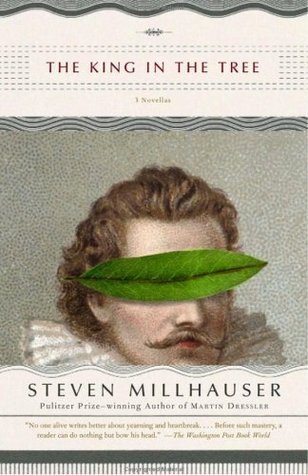What do you think?
Rate this book


256 pages, Kindle Edition
First published February 18, 2003
When I first met Robert, when I was twenty-four and he was thirty, he used to come into the bookstore where I was working. He wore jeans and work boots and flannel shirts. He looked like a skinny lumberjack. I thought he was my age – a student, maybe. Even then he was an interesting man. A teacher who hated teachers, an intellectual who made fun of intellectuals, a Jew with no ties to Judaism – unless you count the piano.
Venetian women were out for pleasure, and Don Juan had bedded so many of them that he sometimes had the sense that Venice was an immense brothel composed of watery corridors and floating bedrooms hung with murky mirrors and paintings of swooning women ravished by centaurs.
Their minstrels sing of love – only of love. Never do they sing of battles, of fallen heroes, of ruin and misery. Their songs know nothing of our stern world, with its bitter burdens and sorrows; for them all is youth, zephyrs, the green buds of a perpetual May.
What bound him was the shimmer of the place, the sense of a world given over to duplication and dissolution: the stone steps going down into the water and joining their own reflection seemed to invite you down into a watery kingdom of forbidden desires, while the water trembling in ripples of light on the stone facades and the arches of ancient bridges turned the solid world into nothing but air and light, an illusion, a wizard's spell. It was a fragile, trembling world that might vanish at any moment—and perhaps that was the secret of the feverish life that began at night, when women wearing the masks of wolves and birds of prey beckoned from passing gondolas, while torchlight rippled in the black water and dark figures disappeared into doorways. Venetian women were out for pleasure, and Don Juan had bedded so many of them that he sometimes had the sense that Venice was an immense brothel composed of watery corridors and floating bedrooms hung with murky mirrors and paintings of swooning women ravished by centaurs.But Juan is bored, and accepts the invitation of a rich English gentleman to stay with him on his country estate. And in that limpid landscape, he is hosted by two elegant ladies: his host's wife and her unmarried sister. Of course, he intends to bed them both, but (to his growing surprise) does not immediately do so. Meanwhile, the place exerts its own magic, a kind of eighteenth-century theme park. In this, Millhauser has perfectly caught the spirit of the age. His host, Augustus Hood, is not only a keen landscape gardener, transforming portions of his estate into replicas of famous places in history, art, and myth, but also an inventor and impresario, filling it with mechanical animals and actors hired to play the appropriate roles. And underlying all this is a serious discussion of whether man's ability to design this simulacrum of nature is proof or disproof of the existence of a Great Designer in charge of the whole world.